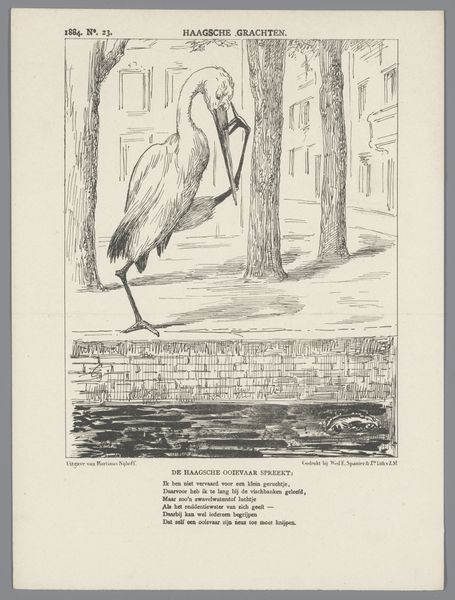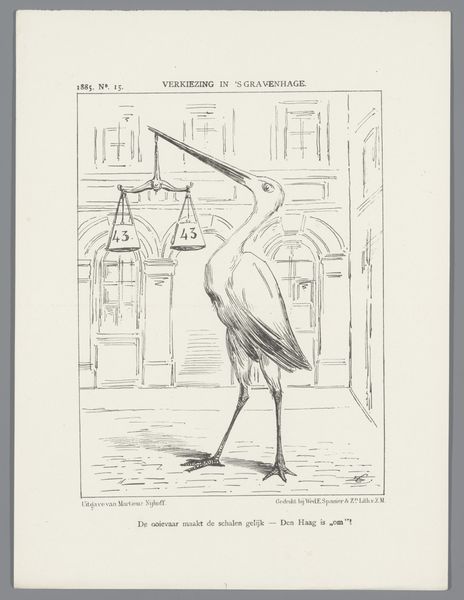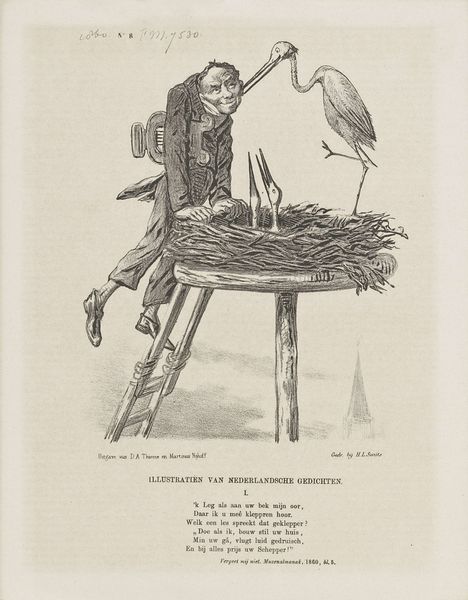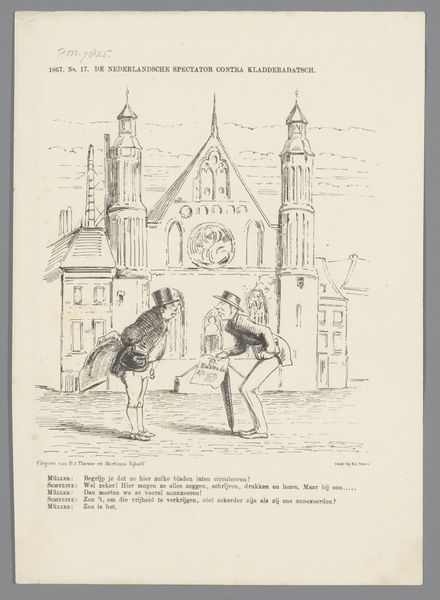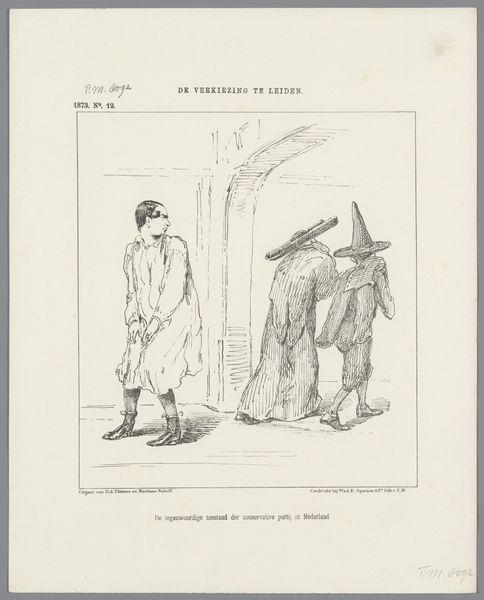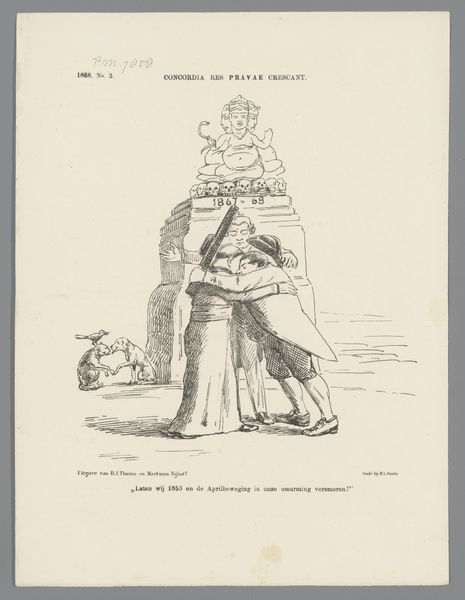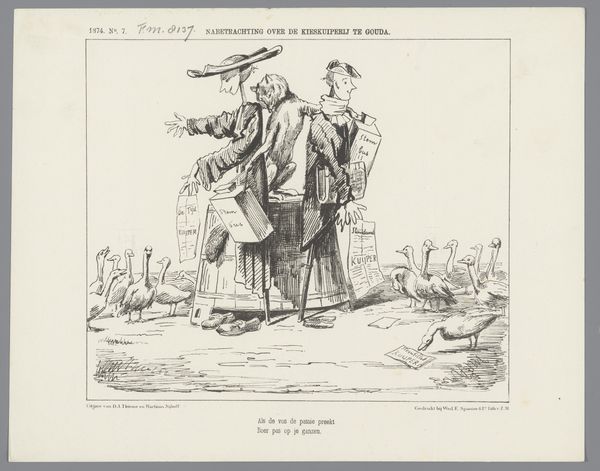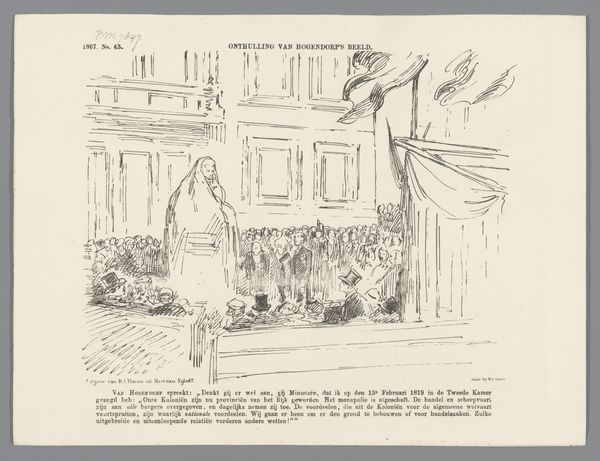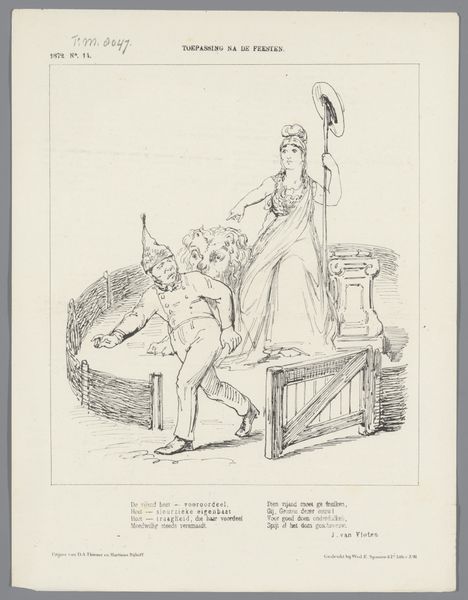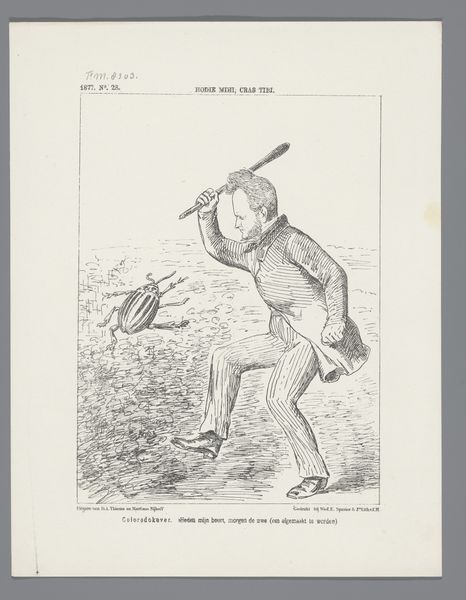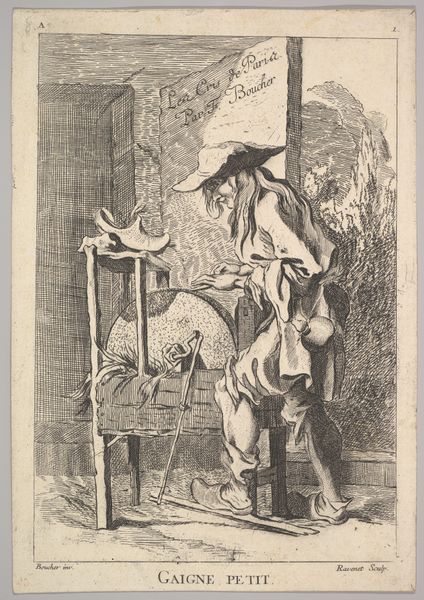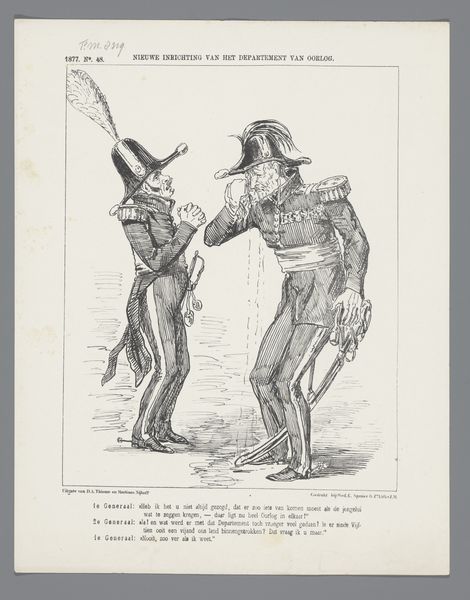
drawing, print, pen, engraving
#
drawing
#
comic strip sketch
#
16_19th-century
# print
#
figuration
#
line
#
symbolism
#
pen
#
cityscape
#
engraving
Dimensions: height 275 mm, width 215 mm
Copyright: Rijks Museum: Open Domain
Curator: Here we have an interesting piece, a print called "Spotprent over Den Haag, 1887", a satirical print about The Hague, created by Johan Michaël Schmidt Crans. It uses engraving, pen, and drawing techniques. My first impression? It’s got this whimsical yet strangely critical air about it, like a fable waiting to unfold. Editor: Fable is right! The linework practically vibrates, but it’s so deliberately rendered—you can practically feel the layers of the printing process. It is literally on the surface: print. Curator: I agree. The sharpness really draws you in. And the central image—two storks conversing in front of what looks like a rather grand building in the cityscape of the Hague, one even carries a token with what I believe is the number 3. I immediately start asking myself about this particular token and what could have been the number three referencing to. It feels pregnant with symbolic weight, like the whole piece is gesturing at something beyond what’s depicted. What do you see, beyond the sheer craftsmanship? Editor: Well, storks, historically symbols of birth and good fortune, positioned in front of such imposing architecture... It strikes me as commentary on labor and status. This building and its production are a form of work, labor, a point further explored by the text below the artwork, but who are those "receiving" its benefits versus those who labor unseen? There is one stork carrying the token that you mentioned. Maybe pointing out something is paid by somebody, but enjoyed by others? This image teases out those hierarchies visually through size, positioning, and these intricate architectural details created laboriously by the artist. Curator: I love how you zeroed in on labor. It definitely gives a new dimension to my personal associations, which went right away for local legends or traditions. Now, the material constraints would inevitably play into the level of precision the artist can obtain, impacting both technical execution, as well as allegorical weight. It feels so open for interpretation. Editor: And those material choices make it so accessible, ironically. Printmaking allows for distribution, mass consumption even. Satire thrives on being seen, engaged with. It becomes a physical artifact of public discourse! So much for high art, the artwork almost begs us to interpret a narrative of how labor intersects with urban spaces and who the narrative leaves outside of the scene. Curator: Thinking of all of that labor creates in me a melancholic sense: we have the storks, maybe unaware of the political context that surrounds them. The viewer gets placed as someone outside of the image that has the knowledge and is prompted to analyze what happens inside the rectangle of the artwork. The symbolism suddenly turns much darker. It is interesting how materiality informs the piece's power of eliciting emotion and sparking analysis! Editor: Exactly. A reminder that even the most seemingly straightforward image is layered with meaning shaped by its means of production and what is trying to capture and show the audience!
Comments
No comments
Be the first to comment and join the conversation on the ultimate creative platform.
